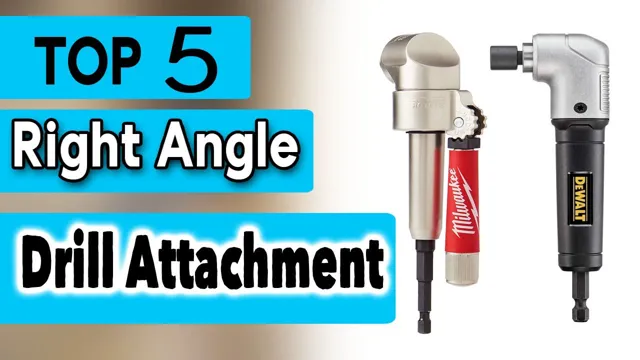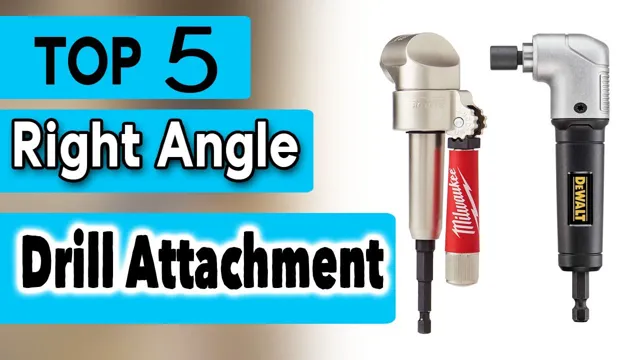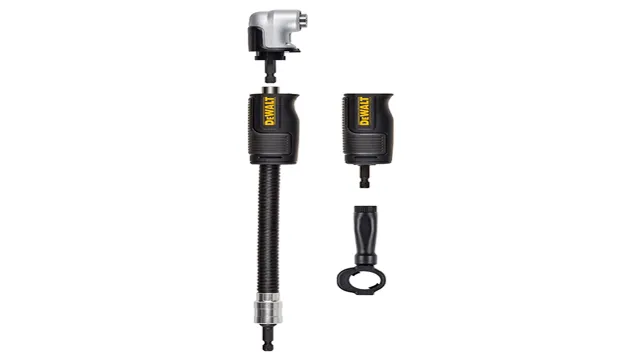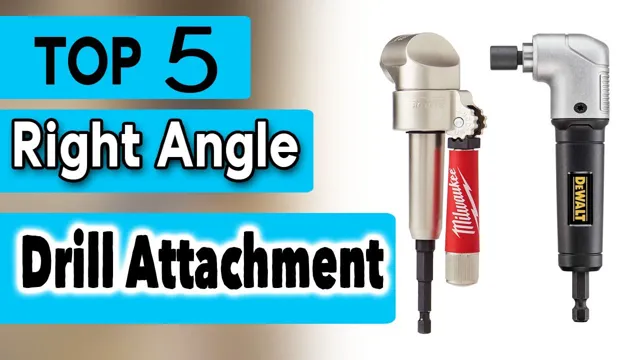How to Change Speed on Milwaukee Right Angle Drill – Simple Instructions and Tips
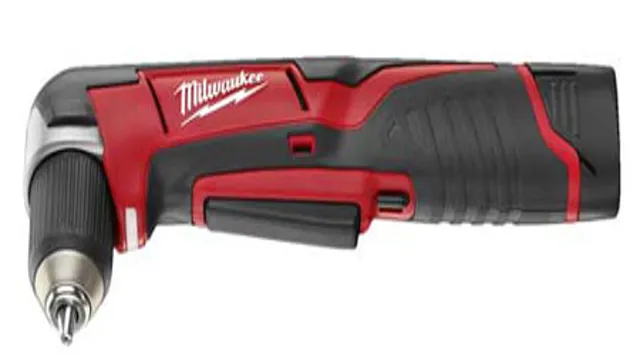
Have you ever used a Milwaukee Right Angle Drill and needed to adjust the speed to fit your project? You’re not alone. Changing the speed of a power tool can be tricky, especially if you’re not familiar with the specific model. But don’t worry – with a little guidance, you’ll be able to adjust the speed of your Milwaukee Right Angle Drill in no time.
This powerful tool can make a significant difference in your work, and perfecting your ability to change the speed will take your projects to the next level. So, let’s do a deep dive into the best ways to change speed on your Milwaukee Right Angle Drill.
Understanding Your Drill
Milwaukee right angle drills are popular among professionals and DIY enthusiasts alike for their versatility and efficiency. If you own one of these handy tools, you may be wondering how to change the speed on it. Fortunately, it’s a relatively simple process.
The Milwaukee right angle drill features a speed selector switch located on the top of the tool. To change the speed, you’ll need to slide the switch to the appropriate speed setting. For example, if you are drilling into metal, you may want to use the slower speed setting to prevent damage to the material.
Alternatively, if you are drilling into wood or other softer materials, you could use the faster speed setting to complete the job more quickly. With a bit of practice, you’ll be able to adjust the speed of your Milwaukee right angle drill quickly and easily, giving you greater control over your work and allowing you to achieve the results you need.
Check the Manual
When it comes to using power tools like a drill, it’s essential to understand how to use them properly. One of the best ways to start is by checking the manual that comes with your drill. It might seem like an obvious step, but too often, people skip this step either because they think they already know how to use it or they’re in a rush to get started.
Taking the time to read the manual will give you a better understanding of the drill’s features, how to operate it, and how to maintain it properly. Plus, you’ll learn about any safety precautions you need to take to avoid injuries. Remember, even if you’ve used a similar drill before, each one may have its unique features, so it’s always good to double-check.
By reading the manual first, you’ll be equipped with all the information you need to use your drill effectively and safely.
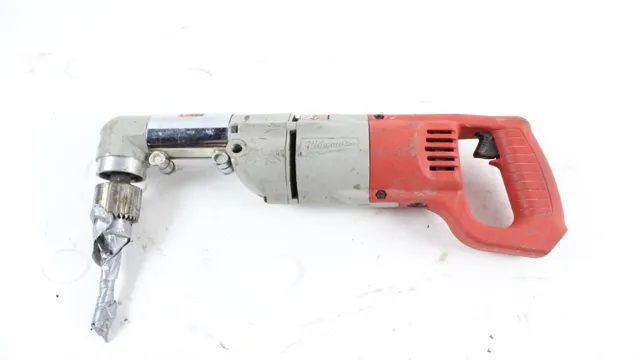
Locate the Speed Selector Ring
If you’re a DIY enthusiast, then owning a drill is a must-have tool in your arsenal. However, as simple as it may seem, using a drill correctly takes some learning. One of the things you need to understand when using a drill is the speed selector ring.
The speed selector ring controls the speed of your drill, and understanding how to use it is essential for a successful drilling operation. It’s commonly located on the trigger area of your drill, and some models even feature a digital speed control system. If you’re working on a delicate project that requires precision and finesse, you’ll need to set your speed selector ring to a lower speed setting.
On the other hand, if you’re working on a project that requires a lot of power, you’ll need to up your speed setting. Understanding how to use the speed selector ring on your drill will help you achieve better results and avoid causing damage to your project. So before you start drilling, take a moment to locate your speed selector ring and ensure you understand how to use it to control the speed of your drill.
Adjusting Speed
Milwaukee right angle drills are versatile tools capable of handling various drilling tasks in tight, confined spaces. Sometimes, you may need to adjust the speed of your Milwaukee right angle drill to achieve optimal results. Fortunately, adjusting the speed of your drill is easy.
Typically, Milwaukee right angle drills come with variable speed triggers that allow you to change the speed of the tool based on the project requirements. All you need to do is press and hold the trigger to increase the speed of the drill or release it to reduce the speed. This feature helps you to start drilling slowly and gradually increase the speed as you progress through the material.
With the right speed settings, you can avoid damaging the material or injuring yourself and achieve a smooth, precise finish. So, the next time you work with your Milwaukee right angle drill, remember to adjust the speed to suit your needs and achieve optimal results.
Turn off the Drill
Adjusting the speed of your drill is important for different types of materials and drilling tasks. If you are working with metal, for example, you may need to use a slower speed to prevent the material from overheating or producing a poor quality hole. On the other hand, if you are drilling through wood, a faster speed may be necessary to achieve a clean cut.
To adjust the speed of your drill, locate the speed selection button on your drill and adjust it accordingly. Once you have selected the appropriate speed, make sure to turn off the drill before making any adjustments or changing the bit. This will not only ensure proper safety procedures, but it will also prevent damage to the drill’s motor.
Remember, taking the extra time to adjust your drill’s speed can make the difference between a successful project and a frustrating one.
Locate the Speed Selector Switch
If you’re trying to adjust the speed of your machine, one of the first things you’ll need to do is locate the speed selector switch. This switch is typically located somewhere on the front or side panel of the machine and can look different depending on the make and model of the device. It’s important to consult your machine’s manual to get a clear idea of where the switch is located and how it works before attempting any adjustments.
Once you’ve found the switch, all you need to do is adjust it to your desired speed. Some machines may have a few different speed options to choose from, while others may allow for more specific adjustments. Whatever the case may be, taking the time to familiarize yourself with your machine and its speed options can help you achieve better results in whatever task you’re trying to accomplish.
Choose the Desired Speed Setting
Adjusting the speed of your device is an important feature that can positively impact your experience with it. Whether it’s a computer, fan, or blender, choosing the desired speed setting can make all the difference. To adjust the speed, start by identifying the different speed settings available.
These can often be found on the device itself or in the user manual. Once you’ve located the settings, choose the one that best suits your needs. For example, if you’re using a blender to make a smoothie, choosing a higher speed setting will give you a smoother consistency.
Meanwhile, a lower setting may be better for chopping vegetables. Ultimately, adjusting the speed setting can help you achieve the desired results from your device, making it a valuable tool in your daily life.
Test the Drill’s Speed
When it comes to testing the speed of your drill, there are a few factors to consider. First, it’s important to adjust the speed of the drill to match the material you are drilling into. Lower speeds work best for harder materials like metal, while higher speeds are more effective on softer materials like wood.
This will prevent the drill bit from overheating and potentially breaking. Another factor to consider when testing your drill’s speed is the RPM (revolutions per minute) of the drill motor. Most drills come with adjustable speed settings, which is a great feature to take advantage of.
Start with a lower speed and gradually increase until you find the right balance for your specific project. It’s also crucial to use the correct drill bit for the material you’re working with. Using the wrong drill bit can cause the bit to dull quickly and may cause damage to both the bit and the material.
Overall, adjusting the speed of your drill is an important aspect of any project, as it can affect the outcome and quality of your work. Taking the time to find the right speed and drill bit combination can save you time and money in the long run, making for a more successful and satisfying project.
Conclusion
Changing the speed on a Milwaukee right angle drill may seem intimidating at first, but with the right approach, it can be a breeze. Just remember to keep your eyes on the prize (or rather, the task at hand), focus on the task at hand, and adjust the speed accordingly. With a little patience, practice, and attention to detail, you’ll be drilling smoothly at the perfect speed in no time.
So go ahead, take that drill and unleash your inner handyman! Happy drilling!”
Safety Precautions to Observe
When it comes to operating any kind of vehicle, adjusting your speed is a critical safety precaution that must always be observed. The faster you go, the less time you have to react to sudden changes or obstacles in the road. This is especially true when driving in unfamiliar territory or in hazardous conditions.
It’s important to always adjust your speed based on the conditions around you, including the weather, traffic, and other drivers on the road. In addition, always be aware of posted speed limits and adjust accordingly. Remember, the ultimate goal is to get to your destination safely, so taking the time to adjust your speed and drive cautiously can ultimately save lives.
FAQs
How do I adjust the speed on my Milwaukee right angle drill?
To adjust the speed on your Milwaukee right angle drill, locate the speed selector switch on the top of the drill. Move the switch to the desired speed setting.
What is the maximum speed of a Milwaukee right angle drill?
The maximum speed of a Milwaukee right angle drill is 1,300 RPM.
Can I use my Milwaukee right angle drill for drilling through metal?
Yes, the Milwaukee right angle drill is suitable for drilling through metal using the appropriate drill bit.
How do I change the drill bit on my Milwaukee right angle drill?
To change the drill bit on your Milwaukee right angle drill, hold the chuck in place and turn the collar clockwise to loosen. Insert the new bit and tighten the collar by turning it counterclockwise.
Can I use my Milwaukee right angle drill with an extension cord?
Yes, the Milwaukee right angle drill can be used with an extension cord, but make sure the cord is rated for the amperage of the drill.
Is the Milwaukee right angle drill suitable for use in tight spaces?
Yes, the Milwaukee right angle drill is designed for use in tight spaces and hard-to-reach areas.
How do I maintain my Milwaukee right angle drill?
To maintain your Milwaukee right angle drill, clean it regularly with a soft, dry cloth and lubricate the chuck periodically with a small amount of oil. Also, store the drill in a dry place and avoid exposing it to extreme temperatures or moisture.

